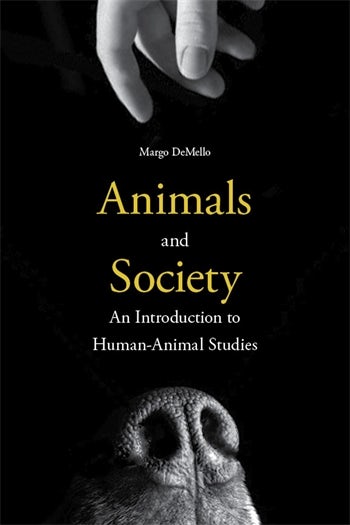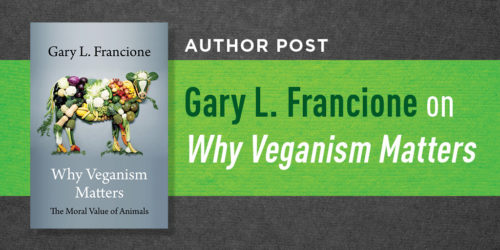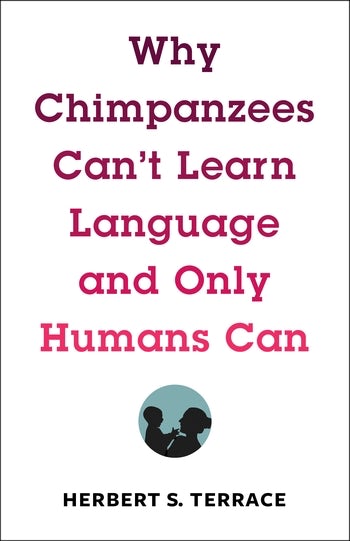Margo DeMello: Why Human-Animal Studies?
“Clearly, much of human society is structured through interactions with non-human animals, and in fact, human society is largely based upon the exploitation of animals to serve human needs. Yet, until very recently academia has largely ignored these types of interaction.”
— Margo DeMello
Margo DeMello teaches anthropology and sociology at Central New Mexico Community College, and she is the author of the recently published Animals and Society, the first book to provide a full overview of human–animal studies. In today’s post, Professor DeMello explains what the field of human-animal studies actually is and why it is important for us to study the way that human and animal lives are intertwined.
Why Human-Animal Studies?
Margo DeMello
Lately, I have been hooked on a website called Dog Shaming. It’s a tumblr devoted to photos of dogs who have committed a doggy “crime” (chewed up the couch, eaten their guardian’s panties, bitten the UPS man), along with a sign (sometimes hung around the dog’s neck) detailing the nature of their crime; often the dogs are photographed alongside of the “evidence.” This week’s signs include the following:
“I was put on 2 lists at daycare: the poop-eater list and the crazy list. The staff described my poop-acquiring tactics as ‘particularly stealthy.’” From Pepper, a black lab
“This is how I say ‘thank you’ for my new big boy bed.” From Robbie, a terrier who was photographed in front of his brand new, and completely destroyed, bed
“I decided to see if that stamp pad really was made with ‘washable ink.’” From Baxter, a white poodle (now covered with pink ink)
This is only the most recent of countless websites devoted to non-human animals: their cuteness, their intelligence, how funny they are, or their similarity to us. Dog Shaming is reminiscent of the Medieval practice of charging animals with crimes, and even trying them in human courts. While the result of that practice was often terrible—animals could be excommunicated from the church, sent to prison, or even hanged for their crimes—Dog Shaming is ultimately about how much we love our dogs, no matter what they do. The dogs are publically shamed, yes, but it is done with affection and humor, and that is as far as their punishment goes.
Dog Shaming is an example of the various ways in which human lives are intimately connected with the lives of other animals. Animals share our homes as companions whom often we treat as members of the family. We can view animals on the “Animal Planet” network or television shows such as “Animal Practice” and subscribe to magazines like BARK or House Rabbit Journal. We eat animals, or their products, for most every meal, and much of our clothing is made up of animal skins, fur, hair, or wool. We wash our hair with products that have been tested on animals and use drugs that were created using animal models. We visit zoos, marine mammal parks and rodeos in order to be entertained by performing animals, and we share our yards—often unwillingly—with wild animals whose habitats are being eroded by our presence. We refer to animals when we speak of someone’s being “cunning as a fox” or call someone a “bitch.” We include them in our religious practices and feature them in our art, poetry, and literature. In these and myriad other ways, the human and nonhuman worlds are inexorably bound.
In recent years, human-animal studies (sometimes known as anthrozoology or animal studies) has developed as a new field of study that explores these very relationships. Clearly, much of human society is structured through interactions with non-human animals, and in fact, human society is largely based upon the exploitation of animals to serve human needs. Yet, until very recently academia has largely ignored these types of interaction. Human-Animal Studies (HAS) takes on the challenge of bringing our interactions and relationships with other animals to the forefront of academic study.
HAS is interdisciplinary and multidisciplinary. Scholars in fields as diverse as anthropology, art history, drama, philosophy, social work and psychology all approach this subject from very different perspectives and with different methodologies, but all are interested in analyzing the complexities of the human-animal relationship.
HAS scholars are not animal behaviorists, although the field draws on the findings of ethology. Our interest lies in the intersections between human lives and human cultures, and those of non-human animals, whether real or virtual.
Human-animal studies is one of the most rapidly growing fields of intellectual inquiry today, with its own academic organizations, scholarly journals, conferences, and hundreds of courses being taught at universities around the world. Two dozen universities now offer degree programs in the field. (See the Animals and Society Institute website for information about courses, degrees, journals and more. A number of university presses now have book series devoted to the field, including Columbia University Press. My own recent book, Animals and Society: An Introduction to Human-Animal Studies (Columbia 2012) is the first textbook written specifically for HAS courses, and will allow more faculty to teach these courses.
Scholars like me celebrate the growth and spread of this field. HAS courses, books, journals and programs not only bring animals into academia as subjects, rather than simply objects, but expose students to a new way of looking at other animals. Students who take HAS courses learn a tremendous amount about the roles and relationships of animals in human society. For instance, students can understand and analyze the ways that animals are used in human society; examine the complex biological and social relationships between animals and humans; understand how animals are represented in art, religion and literature; explore the relationship between the exploitation of animals and the marginalization of human groups; understand the complex role played by companion animals in modern society; and discuss the range of moral, philosophical and scientific issues involving animals today.
While HAS, which shares its roots with the modern animal protection movement, is not explicitly about animal advocacy, the field can lead to improvements in animals’ lives. Like women’s studies or ethnic studies, HAS research has real-world policy implications. Some HAS studies provide specific data that directly inform a particular policy area. Examples include recent research on the use of elephants in zoos, disaster planning that includes companion animals, and “dangerous dog” legislation, all of which can and should be used in crafting public policy on those issues.
One area where human-animal studies have directly been used to craft social policy has been in the link between animal abuse and human-human violence. Policy implications of this important area of research, known simply as “the link,” have led to the development of programs for battered women where they can bring their companion animals, so they don’t have to leave them at home when they flee their batterer, and programs like AniCare that train veterinarians, social workers and law enforcement professionals to detect the signs of abuse in a home—whether that abuse is aimed at animals or humans.
Another real world application of the work that has come out of HAS is in the area of animal-assisted therapy. Like the work on the link mentioned above, animal-assisted therapy is human-centered in that animals are used to help humans in a variety of situations—those who are hospitalized, disabled, elderly, or alone. Swim with dolphin programs, therapeutic horse riding programs, animals in hospitals, hospices and nursing homes, and prisons, are just a few examples of the types of programs that have resulted from this line of research.
Another important real world application of HAS research has to do with animals in shelters. At least four million animals per year are euthanized at animal shelters nationwide in the United States (The Humane Society of the United States puts that estimate at 6-8 million animals per year), and this is an important issue both in terms of the deaths to animals, the trauma to workers, and it is an important economic issue as well. It costs millions of dollars each year for animal care workers to catch, care for, and ultimately euthanize all of those animals. Research that looks at all of the factors associated with the breeding of, abandonment of, and adoption of companion animals can be an important factor in helping to alleviate this enormous problem. Some scholars have looked at things like temperament testing for domestic cats, what the factors are that lead to people abandoning animals at shelters, and whether things like dog training classes or other shelter support programs can lead to permanent placement of animals in homes. Other scholars have focused on animal shelter workers, who have the difficult job of caring for animals thrown away by the general public. Other studies have looked at how movies and television shows can lead to fads in pet ownership, such as the rise in Dalmatian purchases after the movie 101 Dalmatians, or the rise in Chihuahua purchases after the Beverly Hills Chihuahua film.
Ultimately, HAS can be a powerful tool through which to not only better understand the human-animal relationship, but to actively engage in the policy decisions and legislation that shape the ways in which we interact with animals. Keep an eye on this blog as we will continue to write about this developing field, and Columbia’s role in its growth!
Related Posts
1 Response
Leave a Reply Cancel reply
You must be logged in to post a comment.





Wonderful story. It is so great to know that there are courses now on human/animal relationships. I will purchase this book.